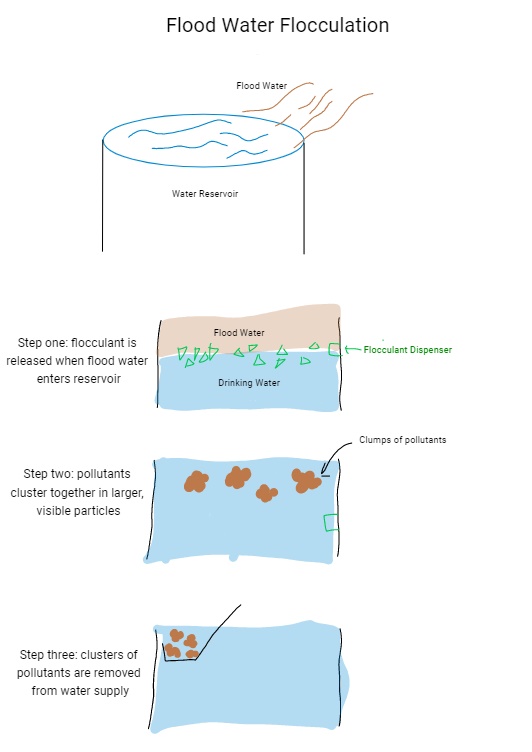As global temperatures increase due to climate change, so too does the risk of different types of flooding in New Jersey communities. As temperatures rise, evaporation increases and sea levels rise, increasing the risk of inland and nuisance flooding. Floods can be devastating to communities in many ways, but contamination of water supply can be particularly damaging, as floodwater can bring sewage, garbage, pesticides, and saltwater into water reservoirs and water treatment plants, which are commonly near bodies of water likely to overflow. To remedy this, a certain chemical can be released into the top layer of these water stores in the event of a flood. This substance, which is produced by P&G, causes pollutants of water to flocculate, binding to each other in large clumps and separating from the water, leaving behind safe drinking water. As flood water rushes into water stores, this substance can be dispensed before pollutants mix with the larger water supply, allowing them to be easily extracted and maintain safe drinking water. This would allow communities to become more resilient against flooding, as their water supply would be safe against the harmful effects that floods can bring.
Contact us
Thank you for your interest in contacting Future Engineers. We look forward to connecting with you!
General Inquiries
support@futureengineers.orgSponsorship Inquiries
sponsor@futureengineers.org
